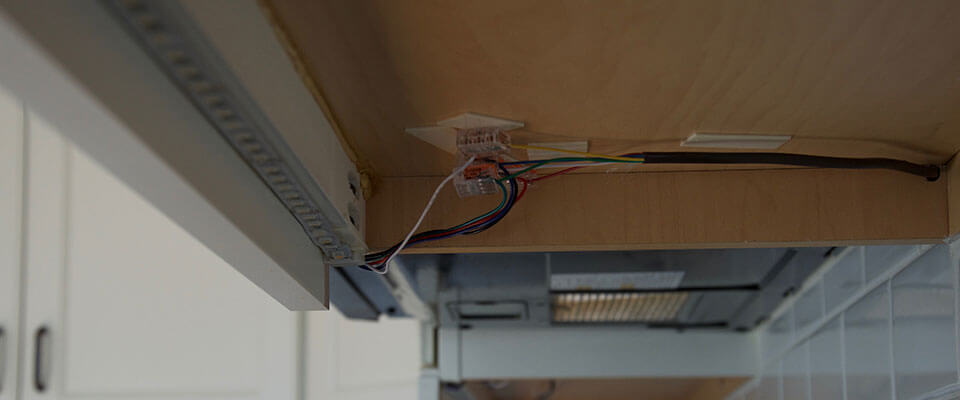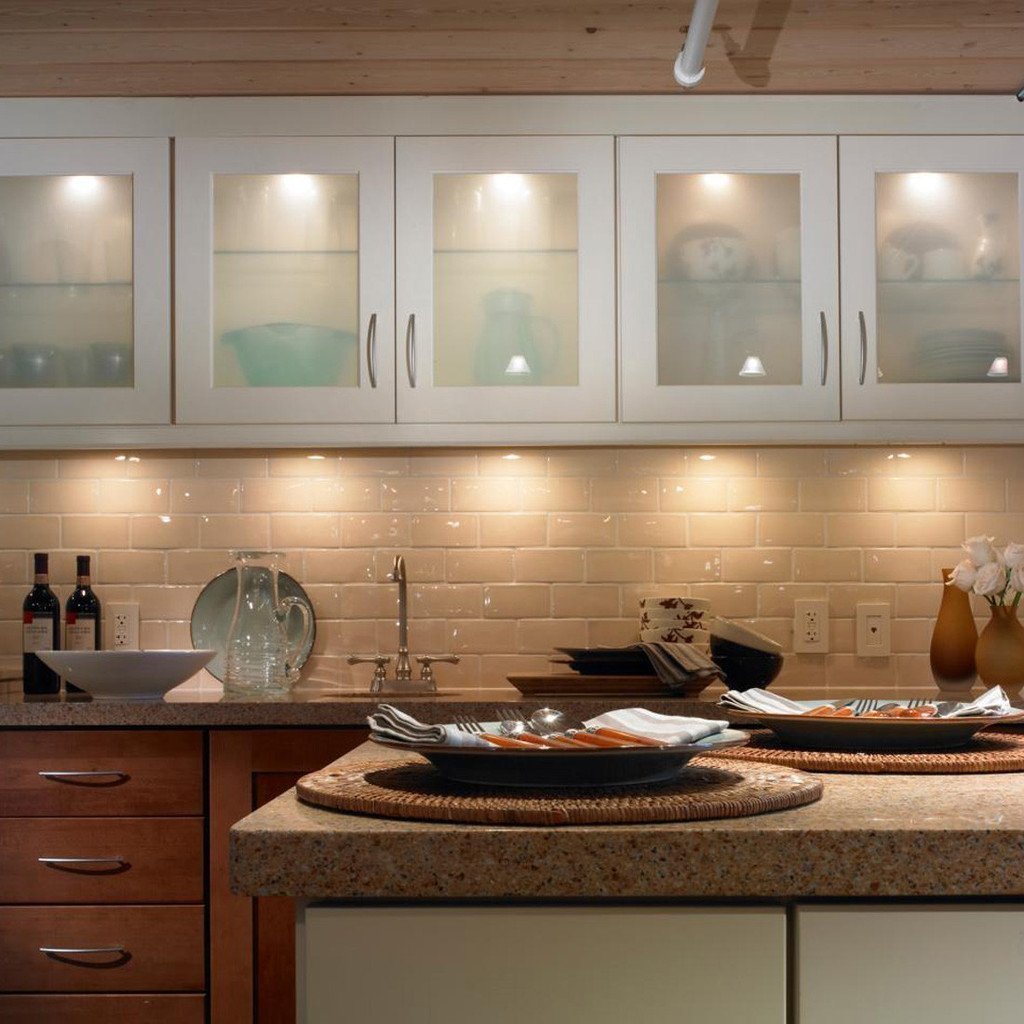Troubleshooting Common Issues: How To Fix Under Cabinet Lighting

Under-cabinet lighting, while convenient and stylish, can sometimes malfunction. Understanding common issues and how to troubleshoot them can save you time, frustration, and potential repair costs.
Flickering or Dimming Lights
Flickering or dimming lights are often a sign of loose connections, faulty bulbs, or a problem with the electrical wiring.
- Check the Bulbs: Start by examining the bulbs. Ensure they are the correct type and wattage for your fixture. Replace any burnt-out or damaged bulbs.
- Inspect the Connections: Carefully check all electrical connections, both at the fixture and the power source. Tighten any loose wires or connections.
- Test the Wiring: If the problem persists, you may need to test the wiring for continuity. A multimeter can help identify any breaks or short circuits.
Complete Loss of Power
If your under-cabinet lights are completely out, the issue could be a blown fuse, a tripped circuit breaker, or a problem with the wiring.
- Check the Circuit Breaker: First, locate the circuit breaker that controls your under-cabinet lights. Check if it has tripped. If so, reset the breaker.
- Inspect the Fuse: If you have a fuse box, check the fuse that corresponds to your under-cabinet lights. Replace any blown fuses.
- Test the Wiring: If the lights remain off, you may need to test the wiring for continuity. A multimeter can help identify any breaks or short circuits.
Testing Wiring and Connections
Testing the wiring and connections is essential for troubleshooting under-cabinet lighting issues.
- Use a Multimeter: A multimeter is a handy tool for testing electrical circuits. It can measure voltage, current, and resistance.
- Check for Continuity: To test for continuity, place the multimeter probes on the ends of the wire. If the circuit is complete, the multimeter will show a reading.
- Test for Voltage: To test for voltage, place one probe on the hot wire and the other on the ground wire. If there is voltage present, the multimeter will show a reading.
| Issue | Cause | Solution |
|---|---|---|
| Flickering or dimming lights | Loose connections, faulty bulbs, or wiring issues | Check bulbs, inspect connections, test wiring |
| Complete loss of power | Blown fuse, tripped circuit breaker, or wiring problems | Check circuit breaker, inspect fuse, test wiring |
Replacing Existing Lighting

Time to ditch those old, dim under-cabinet lights and upgrade to something sleek and stylish! Replacing your existing lighting is a simple DIY project that can instantly transform your kitchen.
Choosing the Right Under-Cabinet Lighting
Selecting the perfect under-cabinet lighting involves considering several factors to ensure you achieve the desired look and functionality.
- Type of Lighting: LED lights are the most popular choice due to their energy efficiency, long lifespan, and bright illumination. Fluorescent lights are also a good option, but they tend to be less energy-efficient and have a shorter lifespan. Incandescent lights are not recommended for under-cabinet lighting as they generate a lot of heat and are not as energy-efficient.
- Brightness: The brightness of your under-cabinet lights is measured in lumens. For general task lighting, aim for 300-500 lumens per foot of cabinet space. If you need brighter light for specific tasks, you can increase the lumen output.
- Color Temperature: Color temperature is measured in Kelvin (K) and affects the appearance of the light. Warm white (2700-3000K) provides a cozy and inviting atmosphere, while cool white (4000-4500K) offers a bright and crisp feel.
- Style: Under-cabinet lights come in various styles, from sleek and modern to traditional and rustic. Choose a style that complements your kitchen’s overall aesthetic.
Disconnecting Old Lighting and Installing New Fixtures
Before you start, make sure to disconnect the power supply to the area where you will be working.
- Disconnect the Power: Turn off the circuit breaker that controls the under-cabinet lighting. To confirm the power is off, use a non-contact voltage tester to check the wires.
- Remove the Old Fixture: Carefully remove the old fixture, taking note of how the wires are connected. If you have a hardwired fixture, you’ll need to unscrew the mounting screws and detach the wires. For plug-in fixtures, simply unplug them from the outlet.
- Install the New Fixture: Mount the new fixture according to the manufacturer’s instructions. Use screws or clips to secure it to the cabinet. Connect the wires, matching the colors (black to black, white to white, and ground to ground). For plug-in fixtures, simply plug them into the outlet.
- Test the New Lighting: Turn on the circuit breaker and test the new lighting. If everything works correctly, you’re ready to enjoy your upgraded under-cabinet lighting!
Wiring Techniques for Different Under-Cabinet Lights
The wiring process varies slightly depending on the type of under-cabinet lighting you choose.
- Hardwired Lighting: Hardwired fixtures are directly connected to the electrical wiring in your kitchen. They usually require an electrician to install.
- Plug-in Lighting: Plug-in fixtures are easier to install and require no special wiring. Simply plug them into an outlet.
- Battery-Operated Lighting: Battery-operated lights are a great option for kitchens without readily available outlets. They are typically wireless and easy to install.
Visual Guide for Replacing Under-Cabinet Lighting
Step 1: Disconnect the Power
* Locate the circuit breaker that controls the under-cabinet lighting.
* Turn off the circuit breaker.
* Use a non-contact voltage tester to confirm the power is off.
Step 2: Remove the Old Fixture
* Carefully remove the old fixture, taking note of how the wires are connected.
* If you have a hardwired fixture, unscrew the mounting screws and detach the wires.
* If you have a plug-in fixture, unplug it from the outlet.
Step 3: Install the New Fixture
* Mount the new fixture according to the manufacturer’s instructions.
* Use screws or clips to secure it to the cabinet.
* Connect the wires, matching the colors (black to black, white to white, and ground to ground).
* For plug-in fixtures, simply plug them into the outlet.
Step 4: Test the New Lighting
* Turn on the circuit breaker.
* Test the new lighting.
* If everything works correctly, you’re ready to enjoy your upgraded under-cabinet lighting!
Installing New Lighting

Installing under-cabinet lighting can significantly enhance your kitchen’s functionality and aesthetics. This section will guide you through the process, from planning the layout to mounting the lights securely.
Planning the Placement and Layout
Proper placement and layout are crucial for maximizing the benefits of under-cabinet lighting. Here are some key considerations:
- Work areas: Focus on illuminating areas where you frequently prepare food, such as the countertop, sink, and stovetop.
- Task lighting: Ensure the light is directed towards the work surface, avoiding glare in your eyes.
- Uniformity: Aim for consistent illumination across the entire area, avoiding dark spots or uneven lighting.
- Switch placement: Consider the location of the light switch for easy access and convenience.
- Cabinet depth: Take into account the depth of your cabinets to determine the optimal placement of the lights.
Installing Hardwired Lights, How to fix under cabinet lighting
Hardwired lighting provides a permanent and reliable solution for under-cabinet illumination. The process involves connecting the lights directly to your home’s electrical system:
- Turn off the power: Before starting, always turn off the power to the circuit you’ll be working on.
- Run electrical wiring: If necessary, run electrical wiring from your electrical panel to the location of the lights. This may require professional assistance.
- Mount the junction box: Install a junction box securely to the underside of the cabinet.
- Connect the wires: Connect the wires from the lighting fixture to the wires in the junction box, ensuring proper polarity (black to black, white to white, and ground to green).
- Secure the fixture: Mount the lighting fixture to the cabinet using appropriate screws or clips.
- Test the lights: Turn the power back on and test the lights to ensure they function correctly.
Installing Plug-in Lights
Plug-in lights offer a convenient and cost-effective option for under-cabinet lighting. They typically come with a power cord that plugs into a standard electrical outlet:
- Choose the right cord length: Select a cord that is long enough to reach a nearby outlet, allowing for flexibility in placement.
- Mount the fixture: Use adhesive strips, clips, or screws to mount the lights securely to the underside of the cabinet.
- Plug in the lights: Connect the power cord to a standard electrical outlet.
Mounting the Lights Securely and Aesthetically
Secure and aesthetically pleasing mounting is crucial for long-lasting and visually appealing under-cabinet lighting. Here are some tips:
- Use appropriate mounting methods: Choose mounting methods that are compatible with your cabinet material and the weight of the lights.
- Conceal wires: Use wire clips or cable channels to neatly conceal the wiring and maintain a clean look.
- Match the finish: Select lighting fixtures that complement the finish of your cabinets for a cohesive aesthetic.
- Consider the placement: Position the lights strategically to avoid obstructing cabinet doors or drawers.
Running Electrical Wiring
If you need to run electrical wiring to the lights, it’s best to consult a qualified electrician. They can ensure that the wiring is done safely and correctly:
- Determine the path: Plan the path of the wiring, taking into account existing walls and obstacles.
- Run the wiring: The electrician will run the wiring through the walls or ceiling, using appropriate conduit and wire types.
- Connect to the panel: The electrician will connect the wiring to the electrical panel, ensuring proper grounding and circuit protection.
Comparing Installation Methods
Here’s a table comparing the pros and cons of different installation methods for under-cabinet lighting:
| Method | Pros | Cons |
|---|---|---|
| Hardwired | Permanent and reliable, no cords or plugs, can handle high wattage | Requires electrical expertise, potentially more expensive, may require running new wiring |
| Plug-in | Easy to install, convenient, affordable, no electrical wiring required | Limited cord length, may be less secure, may not handle high wattage |
How to fix under cabinet lighting – Sometimes, the simplest tasks can bring the most joy. Fixing under cabinet lighting might seem small, but it can transform a space, just like a bold color choice. Imagine the warmth of a vibrant orange wall in your bedroom, creating a space that’s both inviting and energizing.
Orange wall bedroom designs can inspire a similar sense of rejuvenation as well-lit countertops. Whether you’re tackling a home improvement project or just adding a touch of personality, remember that even the smallest changes can make a big difference.
When your under cabinet lighting starts to dim, it’s a sign that it’s time for a refresh. Consider upgrading to the energy-efficient brilliance of t5 under cabinet light bulbs for a brighter, more modern look. With a few simple steps, you can fix your under cabinet lighting and illuminate your kitchen with a fresh, vibrant glow.